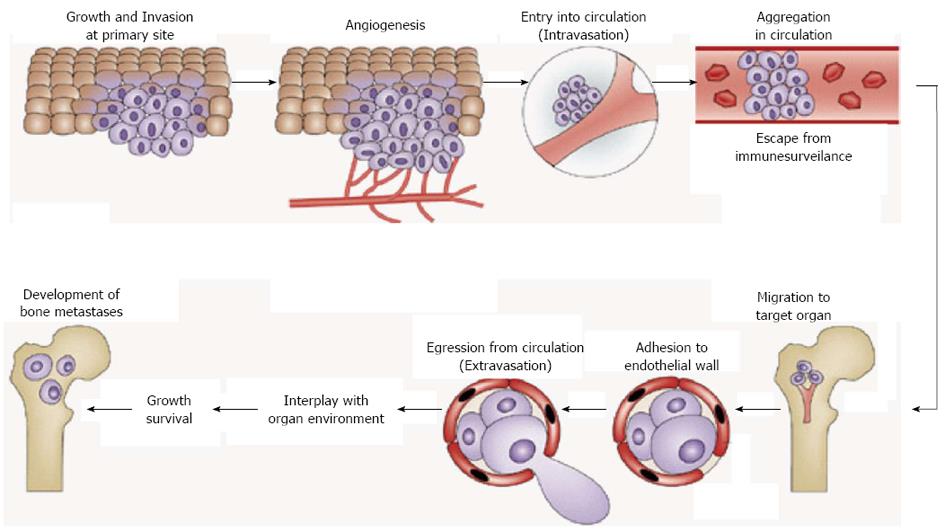Copyright
©2013 Baishideng Publishing Group Co.
World J Orthop. Oct 18, 2013; 4(4): 178-185
Published online Oct 18, 2013. doi: 10.5312/wjo.v4.i4.178
Published online Oct 18, 2013. doi: 10.5312/wjo.v4.i4.178
Figure 1 Steps of distant metastasis.
Distant metastasis of cancer can be divided into two broad processes including before and after cancer cell arrest in target organs. Before the arrival at distant target organs, cancer cells go through growth, invasion, angiogenesis, intravasation, escape from host immune surveillance, and migration to their target organ. Cancer cells in the circulation are called circulating tumor cells (CTCs). This process is common for all metastatic cancer cells. CTCs reached their target organ subsequently show extravasation and finally arrest in the target organ. These cancer cells are called disseminated tumor cells (DTCs). DTCs change their phenotype via interactions with bone. Establishment of the interactions with bone environments is the most critical step for disseminated breast tumor cells to develop bone metastases. This process is unique depending on the target organs. Adapted from Ref. 14 and modified.
- Citation: Yoneda T, Tanaka S, Hata K. Role of RANKL/RANK in primary and secondary breast cancer. World J Orthop 2013; 4(4): 178-185
- URL: https://www.wjgnet.com/2218-5836/full/v4/i4/178.htm
- DOI: https://dx.doi.org/10.5312/wjo.v4.i4.178









